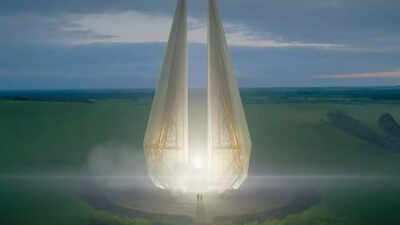
NASA
James Webb Space Telescope
(JWST) has discovered something incredible. A far-off planetary system with gas giants that are packed with coarse silica, which is a space sand. The
YSES-1 system
, which surrounds a young star 300 light-years from Earth, consists of two planets, YSES-1 b and YSES-1 c, both of which have atmospheric sand clouds. The system is a mere 16.7 million years old, an infant in cosmic age that presents scientists with the unusual chance to watch planet formation and development unfold in real-time.These results may redefine the knowledge of the formation and evolution of planets, including those within our own solar system, over billions of years.
NASA's James Webb Space Telescope detects 'sand clouds' made of silicates
According to the study, silicate clouds, or sand clouds, consist of mineral grains such as pyroxene and forsterite, iron-containing compounds found in rocky planets and meteorites. They are more than a novelty in the atmospheres of exoplanets; they contain important clues about the chemistry and atmosphere of far-off worlds.
According to Italy's National Institute for Astrophysics (INAF) scientist Valentina D'Orazi, the silicates seen in these planets go through sublimation and condensation cycles just like water on Earth. These active cycles help the sand clouds stay suspended in the air, indicating sophisticated atmospheric transport and formation processes.
JWST reveals silicates in both exoplanet atmospheres and formation disks
Of the two gas giants, YSES-1 b is a still-growing planet that could someday be a large Jupiter analogue. It is encircled by a flattened cloud of material, a circumplanetary disk; a phenomenon common around young planet. The disk holds the planet-building blocks of its atmosphere, silicates, which fuel its growth.YSES-1 c, however, is already enormous, around 14 times as massive as Jupiter. Its atmosphere has a reddish color due to suspended silica, which sometimes rains down as sandy rain to the planet's center. This is the first direct detection of silicates not only in an
exoplanet
atmosphere but also in a circumplanetary disk. That makes this observation historic and also pivotal to the study of planetary science.
How JWST made the discovery possible
The James Webb Space Telescope was able to image these subtle details due to the extended orbits of the planets around their parent star. These were distances ranging from five to ten times the distance between the Sun and Neptune, and they enabled astronomers to view the planets without the blinding light of the star.With its sophisticated infrared equipment, JWST gathered high-resolution spectral information that, on analysis, showed the presence of silicate particles and their composition. Although such direct observation remains possible only for a few exoplanets at this time, it highlights JWST's unparalleled capability to observe in detail the atmospheres and environments of other worlds.
JWST insights reveal how Jupiter and Saturn may have taken shape
One of the most intriguing things about this discovery is what it implies about the early history of our own solar system. By looking at young exoplanets such as YSES-1 b and c, astronomers can deduce how gas giants such as Jupiter and Saturn might have formed and developed."Examining these planets is like peeking into the history of our own planetary back yard," D'Orazi explained. "It confirms that young exoplanet atmospheres and the disks around them are key drivers of their final atmosphere composition." The researchers also highlighted the need for detailed atmospheric models to interpret the JWST's excellent data pointing to the telescope's continued role in pushing the frontiers of planetary science and exoplanet study.These historic findings were released on June 10 in the journal Nature and highlighted the same day during the 246th American Astronomical Society meeting in Anchorage, Alaska.Also Read | Shubhanshu Shukla to take tardigrades on ISS mission; what are they and why scientists are fascinated by eight-legged ‘water bears’

 1 day ago
56
1 day ago
56




























 English (US)
English (US)